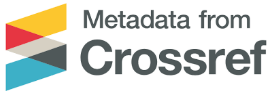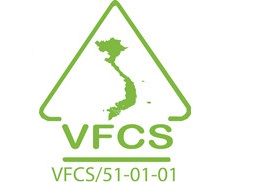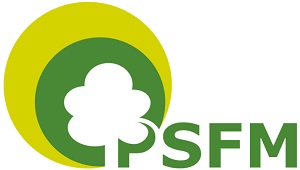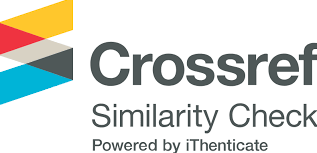GIÁ TRỊ DỊCH VỤ HỆ SINH THÁI CỦA MỘT SỐ LOẠI HÌNH SỬ DỤNG ĐẤT TẠI THANH HÓA
Từ khóa:
Luồng (Dendrocalamus barbatus),, dịch vụ hệ sinh thái, Thanh HóaTóm tắt
Nghiên cứu này được thực hiện nhằm giá trị dịch vụ hệ sinh thái của rừng
luồng và một số loại hình sử dụng đất khác tại Thanh Hóa như rừng trồng
Keo tai tượng, rừng tự nhiên lá rộng thường xanh, lúa nước, ngô và sắn. Các
chỉ số định lượng và định tính được phân tích dựa trên dữ liệu kế thừa từ các
nguồn khác nhau và từ kết quả phỏng vấn. Kết quả nghiên cứu cho thấy rừng
luồng cung cấp nhiều dịch vụ hệ sinh thái có giá trị tương tự như các loại
rừng khác. Kết quả phân tích định lượng cho thấy, rừng luồng cho thu nhập
hàng năm thấp hơn so với các loại hình sử dụng đất nông nghiệp và nhu cầu
nhân lực cũng thấp hơn. Tuy nhiên, giá trị ngày công lao động từ luồng lại
cao gấp đôi so với ngày công canh tác lúa nước, sắn và ngô. Kết quả phân
tích định tính cho thấy, giá trị dịch vụ hệ sinh thái của rừng luồng cao hơn so
với rừng trồng Keo tai tượng và rừng tự nhiên, nhưng trữ lượng carbon của
rừng luồng tại một thời điểm nhất định lại thấp hơn so với 2 loại rừng trên,
do luồng thường xuyên được khai thác và có khả năng sinh măng hàng năm,
sinh trưởng của luồng cũng nhanh hơn so với Keo tai tượng và cây gỗ rừng
tự nhiên, nên lượng carbon tích lũy trong cả quá trình kinh doanh của rừng
luồng cao hơn so với Keo tai tượng và rừng tự nhiên
Tài liệu tham khảo
1. Alrasjid, H, 2003. The effect of nitrogen, phosphor, and potassium fertilisers to the clump growth and pulp quality of Bambusa bamboos at Turaya Log over forest area, South Sulawesi (Indonesia). Bul. Pen. Hutan, 619, pp 13-36.
2. Birgitta, Sjödell, and Hanna, Thelberg, 2020. Impact of agroforestry on soil loss mitigation in the sloping land of Northwest Vietnam’. Master thesis. Department of Soil and Environment, Swedish University of Agricultural Sciences.
3. Bộ Nông nghiệp và Phát triển nông thôn, 2006. Cẩm nang ngành Lâm nghiệp. Chương Tăng trưởng rừng. Trang 66.
4. Đặng Thịnh Triều, 2011. Nghiên cứu các giải pháp phòng chống thoái hóa, phục hồi và phát triển bền vững rừng luồng Dendorocalamus babartus tại Thanh Hóa. Báo cáo tổng kết đề tài. Viện Khoa học Lâm nghiệp Việt Nam.
5. García Juan Carlos Camargo and Trinh Thang Long, 2020. ‘Assessment of ecosystem services from bamboodominated natural forests in the coffee region, Colombia. Comparisons of bamboowithotherland uses. INBAR working paper No. 85.
6. Yuen Jiaqi, Tak Fung and Alan, D., Ziegler, 2017. Carbon stocks in bamboo ecosystems worldwide: Estimates and uncertainties. Forest Ecology and Management, 393, pp 113- 138.
7. Nguyen La, Delia Catacutan, Tran Ha My, 2014. Bamboo-based agroforestry systems development in Thanh Hoa province.
8. LASUCO - Công ty Cổ phần Mía đường Lam Sơn, 2017. Công viên sinh thái tre luồng Thanh Tam. Tài liệu nội bộ.
9. Nguyễn Đức Hải, 2019. Nghiên cứu động thái tích lũy carbon của rừng Luồng (Dendrocalamus barbatus) trồng thuần loài tại Thanh Hóa. Luận án tiến sĩ chuyên ngành lâm sinh. Trường Đại học Lâm nghiệp.
10. Nguyễn Hữu Tân, 2014. Cơ sở khoa học của các giải pháp lâm sinh áp dụng cho rừng phòng hộ đầu nguồn hồ chứa nước Cửa Đạt, huyện Thường Xuân, tỉnh Thanh Hoá. Luận án tiến sĩ chuyên ngành lâm sinh. Trường Đại học Lâm nghiệp.
11. Nguyễn Song Hoan, 2020. Thực trạng và giải pháp phát triển tre luồng trên địa bàn tỉnh Thanh Hóa. Bài trình bày trong Hội thảo “Đối thoại chính sách phát triển ngành tre bền vững ở Việt Nam. Vinh - Nghệ An, 18 tháng 6 năm 2020.
12. Paudyal, K., Adhikari, S., Sharma S., Samsudin, Y.B., Paudyal, B.R., Bhandari, A., Birhane, E., Darcha, G., Trinh, T.L., and Baral, H, 2019. Framework for assessing ecosystem services from bamboo forests: Lessons from Asia and Africa. Working Paper 255. Bogor, Indonesia.
13. Proyuth Ly, Didier Pillot, Patrice Lamballe and Andreas de Neergaard, 2009. Evaluation of bamboo as an alternative cropping strategy in the northern central upland of Viet Nam: above-ground carbon fixing capacity, accumulation of soil organic carbon, and socio- economic aspects.
14. Quỹ Bảo vệ, phát triển rừng và Phòng chống thiên tai tỉnh Thanh Hóa, 2018. Báo cáo phục vụ sơ kết 10 năm tổ chức và vận hành Quỹ Bảo vệ và Phát triển rừng.
15. Quỹ Bảo vệ, phát triển rừng và Phòng chống thiên tai tỉnh Thanh Hóa, 2021. Báo cáo kết quả thực hiện chính sách chi trả dịch vụ môi trường rừng năm 2020.
16. Sutiyono, 2004. Soil fertility under the Bamboo plantation of Dendrocalamus asper Back. Bamboo Journal, 21, pp 66-71.
17. Ủy ban nhân dân tỉnh Thanh Hóa, 2020. Quyết định số 721/QĐ-UBND, ngày 28 tháng 2 năm 2020 về việc phê duyệt, công bố hiện trạng rừng tỉnh Thanh Hóa năm 2019.
18. Tripathi, S., Singh, K, 1996. Culm recruitment, dry matter dynamics and carbon flux in recently harvested and mature bamboo savannas in the Indian dry tropics’, Ecological Research, 11, pp 149-164.
19. UN-REDD Viet Nam Programme, 2012. Tree allometric equations in Evergreen broadleaf and Bamboo forests in the North Central Coastal region, Vietnam. Part B-4.
20. Võ Đại Hải, Đặng Thịnh Triều, Nguyễn Hoàng Tiệp, Nguyễn Văn Bích và Đặng Thái Dương, 2009. Năng suất sinh khối và khả năng hấp thụ carbon của một số dạng rừng trồng chủ yếu ở Việt Nam. Nhà xuất bản Nông nghiệp. Trang. 236.
21. Vu Dinh Tuan. 2015. Soil conservation methods and their impact on nitrogen cycling and competition in maise cropping systems on steep slopes in Northwest Vietnam. Master thesis. Institute of Plant Production and Agroecology in the Tropics and Subtropics. University of Hohenheim, German












